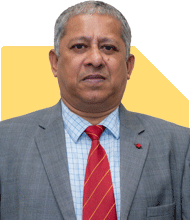37-Year-Old with 5L Monthly Income: Can I Retire at 50 with 25Cr?
Ramalingam Kalirajan |8077 Answers |Ask -Follow
Mutual Funds, Financial Planning Expert - Answered on Aug 07, 2024
He has an MBA in finance from the University of Madras and is a certified financial planner.
He is the director and chief financial planner at Holistic Investment, a Chennai-based firm that offers financial planning and wealth management advice.... more

Hello Sir I am 37 year old male, sole earner of the family and have wife and two kids(7 & 2). I have a MF portfolio of 1.1 Cr with 1.5L SIPs per month. I also have a stock portfolio of 1.3Cr. My monthly take home salary is 5L. I have around 30L in PF. I have properties worth 3 Cr and a home loan EMI of 1.5L pm. Can you suggest what changes I need to do to retire at 50 years with a net corpus of 25Cr.
You're 37 years old with a family of four.
Your take-home salary is Rs. 5 lakhs per month.
You have a strong investment portfolio already.
Investment Portfolio
Mutual Funds: Rs. 1.1 Crore with Rs. 1.5 lakh monthly SIP.
Stocks: Rs. 1.3 Crore
PF: Rs. 30 lakhs
Properties: Worth Rs. 3 Crore
Liabilities
Home loan EMI: Rs. 1.5 lakhs per month
This is a significant part of your monthly income.
Retirement Goal
You want to retire at 50 with Rs. 25 Crore corpus.
That's 13 years from now.
It's an ambitious but achievable goal with your income.
Increasing Investments
Consider increasing your monthly SIP amount.
You can potentially invest more from your salary.
Try to increase investments by 10% each year.
Diversification
Your portfolio seems tilted towards equity and property.
Consider adding some debt funds for balance.
This can help manage risk as you near retirement.
Emergency Fund
Ensure you have 6-12 months of expenses saved.
This protects your investments during emergencies.
Keep this in easily accessible, low-risk options.
Insurance Coverage
Review your life and health insurance.
Ensure adequate coverage for your family's security.
Consider disability insurance too.
Property Investment
Your property investment is significant.
Consider if it's giving good returns.
Think about selling some if returns are low.
Loan Repayment
Try to repay your home loan faster.
This will free up more money for investments.
Consider using bonuses or stock gains for prepayment.
Tax Planning
Maximize your tax-saving investments.
Use Section 80C, 80D, and other benefits fully.
This can help you invest more towards your goal.
Regular Portfolio Review
Review your investment mix every year.
Rebalance to maintain the right risk level.
Shift to safer options as you near 50.
Children's Education Planning
Factor in future education costs for your kids.
Start separate investments for this if not done already.
This ensures your retirement corpus isn't affected.
Finally
Your goal is challenging but possible with discipline.
Increase your investments steadily over the years.
Consider talking to a Certified Financial Planner for a detailed plan.
Best Regards,
K. Ramalingam, MBA, CFP,
Chief Financial Planner,
www.holisticinvestment.in
You may like to see similar questions and answers below
Ramalingam Kalirajan |8077 Answers |Ask -Follow
Mutual Funds, Financial Planning Expert - Answered on May 19, 2024
Ramalingam Kalirajan |8077 Answers |Ask -Follow
Mutual Funds, Financial Planning Expert - Answered on Aug 08, 2024
Ramalingam Kalirajan |8077 Answers |Ask -Follow
Mutual Funds, Financial Planning Expert - Answered on Aug 08, 2024
Ramalingam Kalirajan |8077 Answers |Ask -Follow
Mutual Funds, Financial Planning Expert - Answered on Aug 29, 2024
Archana Deshpande |103 Answers |Ask -Follow
Image Coach, Soft Skills Trainer - Answered on Mar 05, 2025
Archana Deshpande |103 Answers |Ask -Follow
Image Coach, Soft Skills Trainer - Answered on Mar 04, 2025
Archana Deshpande |103 Answers |Ask -Follow
Image Coach, Soft Skills Trainer - Answered on Mar 04, 2025
Dr Dipankar Dutta |909 Answers |Ask -Follow
Tech Careers and Skill Development Expert - Answered on Mar 04, 2025
Dr Dipankar Dutta |909 Answers |Ask -Follow
Tech Careers and Skill Development Expert - Answered on Mar 04, 2025
Dr Dipankar Dutta |909 Answers |Ask -Follow
Tech Careers and Skill Development Expert - Answered on Mar 04, 2025
Dr Dipankar Dutta |909 Answers |Ask -Follow
Tech Careers and Skill Development Expert - Answered on Mar 04, 2025
Dr Dipankar Dutta |909 Answers |Ask -Follow
Tech Careers and Skill Development Expert - Answered on Mar 04, 2025
Prof Suvasish Mukhopadhyay |458 Answers |Ask -Follow
Career Counsellor - Answered on Mar 04, 2025
Prof Suvasish Mukhopadhyay |458 Answers |Ask -Follow
Career Counsellor - Answered on Mar 04, 2025




















